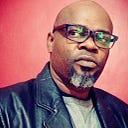Most people have lodged in the mind the adage that ‘you take calculated risks’. How can true risk be calculated? This presupposes that there needs to be a certain if not sufficient information that makes you take a risk.
The truth is, you cannot jump blindly into a pursuit or quest and call it risk. You need different levels of information to warrant such an attempt.
Knowledge of Self
Apart from being overzealous and self confident a man or woman persuaded of an idea seldom thinks they will fail at it. I have seen people queuing all day in an attempt to convince judges of a competition about their eligibility to succeed in that pursuit. This is more than knowledge of self it sometimes it borders on excessive self-compulsion, which can by equal measure be a blind spot. Be it as it may, taking a risk needs you to at least, on the smallest piece of objectivity available to believe that you are able to pursue the idea in mind.
Knowledge of the Pursuit
You have to be able to at least be conversant with the wherewithal of the pursuit in question. You need to do sufficient research and probably have a skill or so that facilitates the pursuit of the idea. If not be at least able to know people with such skills that you can mobilize to gang up around the idea in questions. Some people have a high sense of developed intuition that gives them the unique eye of opportunities. Some are just nerds of bravado and will jump then think later of the consequences. They may succeed because a large part of risk taking is charming and pushing off fear over the edge.
Reasonable Doubt
Doubt can sometimes be inspired by excessive information. Over analysis is a stumbling block that hinders many from stepping out and pursuing their dreams. When we say reasonable doubt we think we mean ‘knowledge enough to pursue’. Looking at it from another angle reasonable doubt can actually be ‘knowledge enough to inspire intelligent suspicion’. Reasonable and doubt sometimes looks like a forced marriage it usually is driven by children of fear and suspicion. Most of the time when reasonable doubt is registered the pursuit of risk is put to an end ‘rationally’.
The Fringe of Action
Action is the intentional step one can take to challenge the fringe. The fringe may be edgy but there is a bug in everyone’s mind that desires to know what would come out of crossing lines of the dare. We love peoples stories because they make us long for experiences the have jumped into that we desire to be a partaker of some day. Fringe stories are action stories. A person who takes action overcomes the fringe. Action is knowledge applied. In the pursuit of risk there is the space of new knowledge to be gained on what should have been done and what was gained. We may never know what lies beyond the fringe if we do not put action to what we know.
Bounce Back Muscle
When we learn how to fail and get up, we then begin to develop the muscle that helps us bounce back in the risk taking business. This muscle is built because of repeated action that defies the reputation of inaction. The reputation of inaction is that position that is taken to avoid looking bad or failing. In short it is knowing and not doing. When you know and don’t do you deny yourself the opportunity to experience what you know differently. I have always failed when I tied myself to the ‘sacrifice’ of knowing stuff I did not practice. I have also equally benefited from the translation of information to experience that has led to more participatory understanding when I have stepped out of the reputation bubble. People think if the fail they will lose their reputation. The truth is that if you fail you will encounter real reputation. The more you practice what you know the more you build the muscle to bounce back and do it again.
Go ahead and take the risk — and let us really know.
